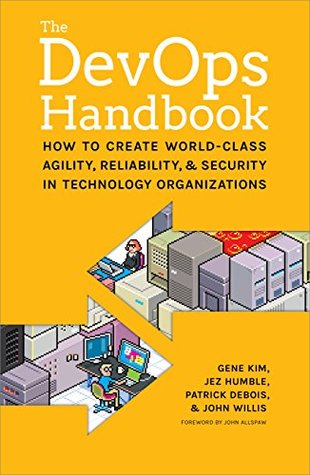More on this book
Community
Kindle Notes & Highlights
by
Gene Kim
Read between
July 10 - November 7, 2020
“Let there be no more talk of DevOps unicorns or horses but only thoroughbreds and horses heading to the glue factory.”
DevOps is a manifestation of creating dynamic, learning organizations that continually reinforce high-trust cultural norms, it is inevitable that these organizations will continue to innovate and win in the marketplace.
“Every industry and company that is not bringing software to the core of their business will be disrupted.”
Many psychologists assert that creating systems that cause feelings of powerlessness is one of the most damaging things we can do to fellow human beings—we deprive other people of their ability to control their own outcomes and even create a culture where people are afraid to do the right thing because of fear of punishment, failure, or jeopardizing their livelihood. This can create the condition of learned helplessness, where people become unwilling or unable to act in a way that avoids the same problem in the future.
small teams of developers independently implement their features, validate their correctness in production-like environments, and have their code deployed into production quickly, safely, and securely.
Frederick P. Brooks, The Mythical Man-Month,
“deliver working software frequently, from a couple of months to a couple of weeks, with a preference to the shorter timescale,”
small, self-motivated teams working in a high-trust management model.
DevOps, we typically define our technology value stream as the process required to convert a business hypothesis into a technology-enabled service that delivers value to the customer.
telemetry.
Our goal is to decrease the amount of time required for changes to be deployed into production and to increase the reliability and quality of those services.
Lean Thinking: Banish Waste and Create Wealth in Your Corporation by James P. Womack and Daniel T. Jones.
Each time the work passes from team to team, we require all sorts of communication: requesting, specifying, signaling, coordinating, and often prioritizing, scheduling, deconflicting, testing, and verifying. This may require using different ticketing or project management systems; writing technical specification documents; communicating via meetings, emails, or phone calls; and using file system shares, FTP servers, and Wiki pages.
Beyond the Goal, Dr. Goldratt states,
Implementing Lean Software Development: From Concept to Cash, Mary and Tom Poppendieck
The Fifth Discipline: The Art & Practice of the Learning Organization
our goal is to create fast feedback and fast forward loops
we] build ever-deeper knowledge about how to manage the systems for doing our work, converting inevitable up-front ignorance into knowledge.”
In the technology value stream, we optimize for downstream work centers by designing for operations, where operational non-functional requirements (e.g., architecture, performance, stability, testability, configurability, and security) are prioritized as highly as user features.
When these accidents affect our customers, we seek to understand why it happened. The root cause is often deemed to be human error, and the all too common management response is to “name, blame, and shame” the person who caused the problem.†
Pathological organizations are characterized by large amounts of fear and threat. People often hoard information, withhold it for political reasons, or distort it to make themselves look better. Failure is often hidden. Bureaucratic organizations are characterized by rules and processes, often to help individual departments maintain their “turf.” Failure is processed through a system of judgment, resulting in either punishment or justice and mercy. Generative organizations are characterized by actively seeking and sharing information to better enable the organization to achieve its mission.
...more
“By removing blame, you remove fear; by removing fear, you enable honesty; and honesty enables prevention.”
tacit knowledge
antifragility by author and risk analyst Nassim Nicholas Taleb.
What was your last step and what happened? What did you learn? What is your condition now? What is your next target condition? What obstacle are you working on now? What is your next step? What is your expected outcome? When can we check?
in Crossing The Chasm, where the chasm represents the classic difficulty of reaching groups beyond the innovators and early adopters (see figure 9).
Find Innovators and Early Adopters: In the beginning, we focus our efforts on teams who actually want to help—these are our kindred spirits and fellow travelers who are the first to volunteer to start the DevOps journey. In the ideal, these are also people who are respected and have a high degree of influence over the rest of the organization, giving our initiative more credibility. Build Critical Mass and Silent Majority: In the next phase, we seek to expand DevOps practices to more teams and value streams with the goal of creating a stable base of support. By working with teams who are
...more
This highlight has been truncated due to consecutive passage length restrictions.
don’t pay down technical debt can find themselves so burdened with daily workarounds for problems left unfixed
2001, the Agile Manifesto was created by seventeen of the leading thinkers in software development,
Started in 2007, the Velocity Conference was created by Steve Souders, John Allspaw, and Jesse Robbins to provide a home for the IT Operations and Web Performance
The Theory of Constraints body of knowledge


